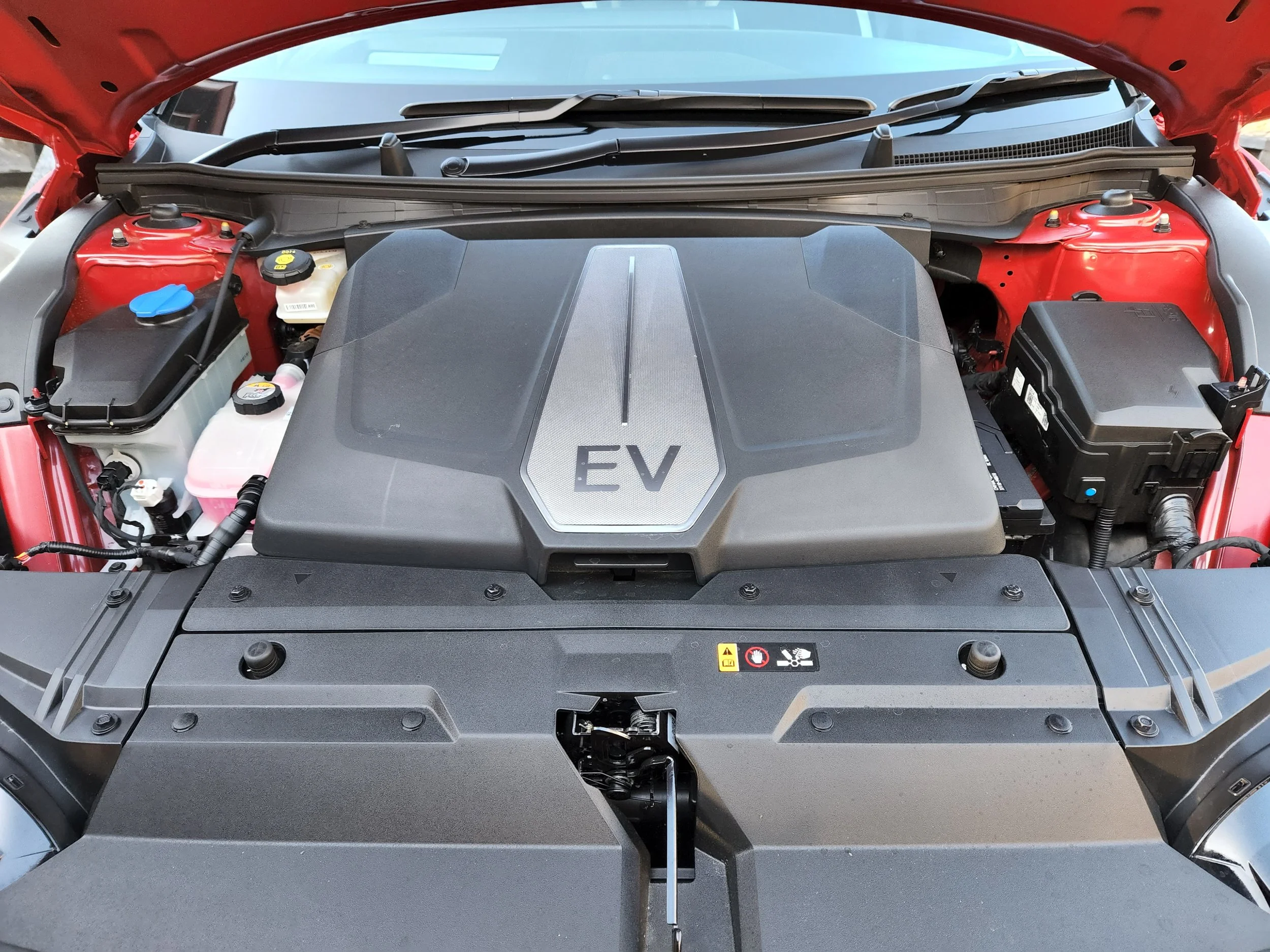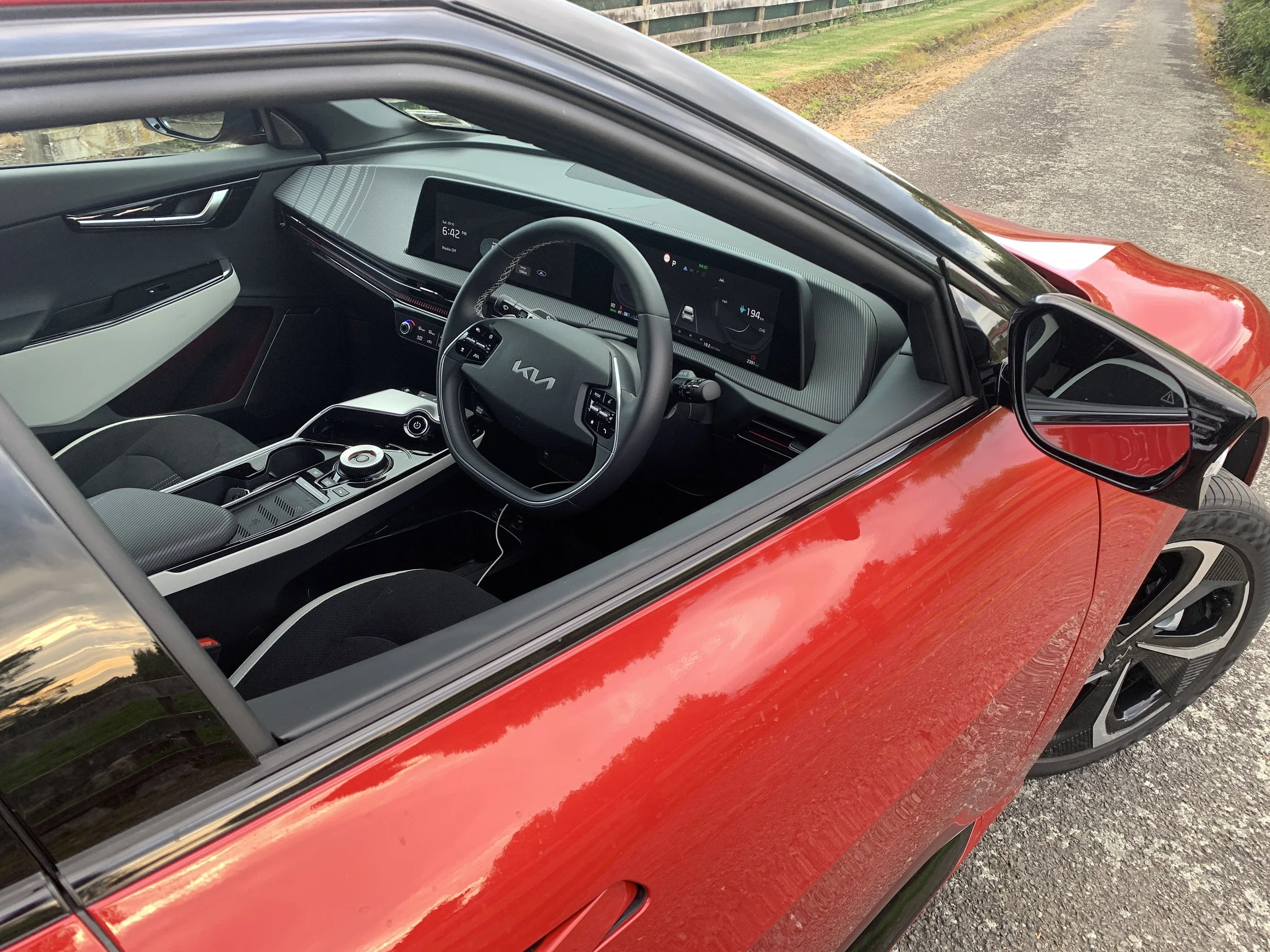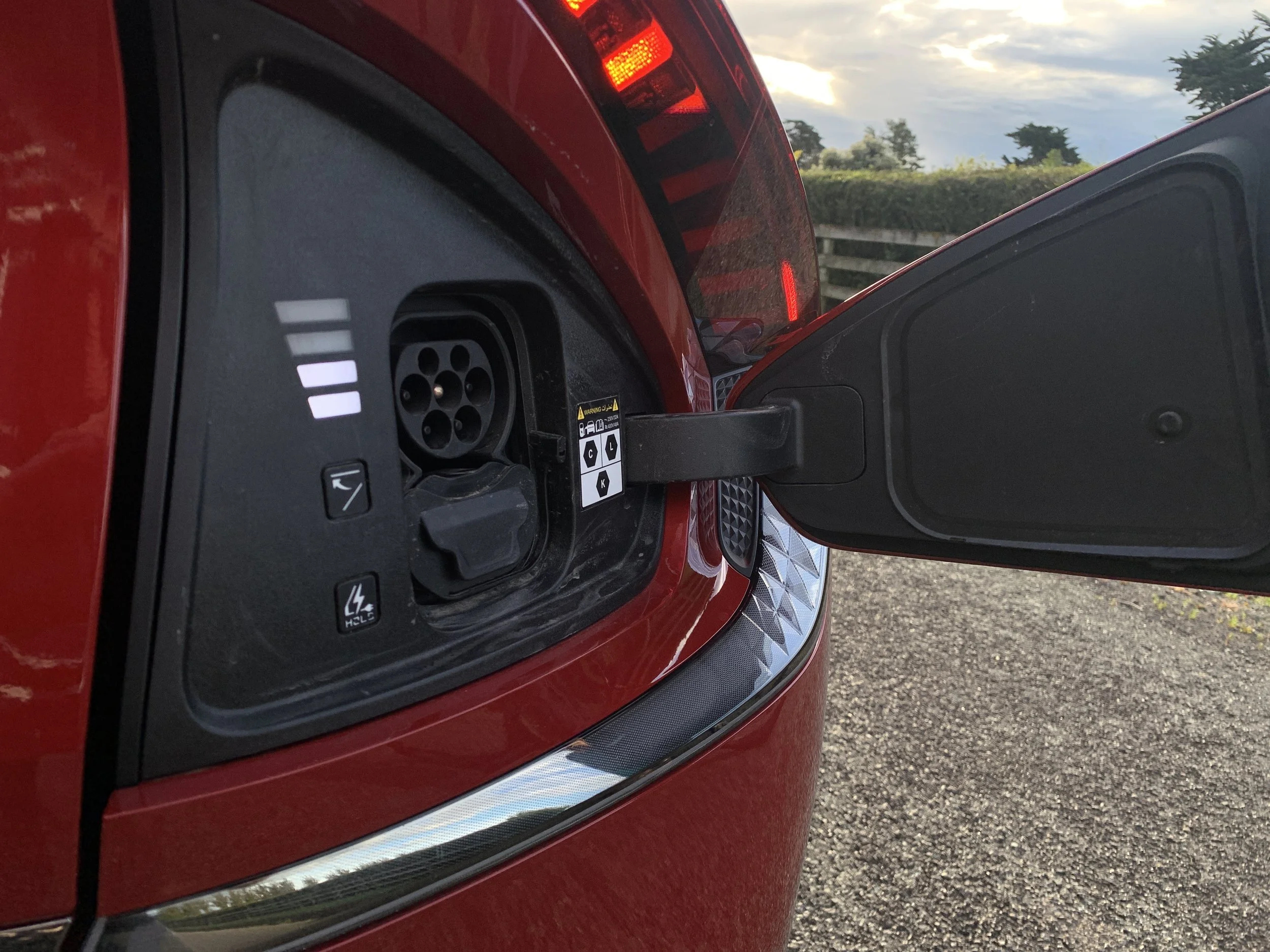Kia EV6 GT Line road test review: It’s the generation game
/What better car to visit some early sources of green energy in the writer’s home province?
Price: $111,990
Powertrain: Twin electric motor with 77.4kWh lithium ion battery, output 239kW/605Nm, all-wheel drive, single speed. Energy use 18 kWh/100km, range 484km.
Vital statistics: 4695mm long, 1890mm wide, 1550mm high, wheelbase 2900mm.
We like: Strong performance specially when in Sport, high-level comfort and safety specification.
Not so much: High price, potentially divisive styling.
SEEMS we’re all fans of renewable generation - we’re just not so sure what sort of renewables they should be.
Take wind farms. Some reckon they’re a blot on our scenic landscape. Put them off shore? Seems some don’t like that idea, either. As for hydro? The last large-scale scheme was the Clyde Dam project in 1993. That was controversial enough.
With more than 50,000 electric-involved vehicles now on the road, some will think our national electricity generation capability is under strain. Rest easy on that one.
The Energy Efficiency and Conservation Authority (EECA) estimates that if every light vehicle operating in New Zealand was to suddenly rely on electric replenishment, total demand would increase by around 20 percent. It’s an increase the existing electricity network can handle, so long as the majority of vehicles are charged off-peak.
As things stand, 60 percent of our electricity is generated by hydro. Most of the really big schemes are in the South Island, yet there more than 100 individual smaller schemes, cumulatively contributing around 5000 megawatts of installed hydro capacity, all around the country. Many began generating at least 100 years ago.
The nation’s first was established in 1886 at Bullendale, Otago, to power a gold stamp battery. The first Government-funded hydro scheme was in 1901, a 100kW generator at Okere Falls, near Rotorua. Reefton was the first town with a reticulated hydro power supply, created in 1888. It’s now being restored. The first major hydro scheme, at Lake Coleridge, was built in 1914 to supply electricity to Christchurch.
In my home province of Taranaki, they are all over the place, having being built from 1898 to make use of all that water rushing down off Mt Taranaki. In fact, of the first 14 publicly available electricity supplies in New Zealand, seven of them were in Taranaki.
With that as background, using a latest-generation electric vehicle to tour to a couple of examples of our country’s most dominant means of generating the renewable electricity that powers such cars was highly satisfying.
Our vehicle is considered a sports utility but more like a liftback via its futuristic styling. Atop the Hyundai Group’s new-age Electric Global Modular Platform that will underpin more Kias over the next four years, the EV6 looks reasonably standard when viewed from the front, but its side profile and especially rear view let you know that this can only be an EV.
The interior is rather futuristic too, particularly a ‘floating’ centre console that offers plenty of storage underneath, and touch buttons that can be used several ways – for example, an air conditioning temperature knob also doubles as audio volume control if that’s what those aboard choose. And of course there is the usual EV-related consumption and range information displayed on screens that run right across the dash area, and the transmission is a dial that simply chooses Reverse, Neutral and Drive, with a Park button in the middle of the dial. Easy.
The EV is quite a large vehicle with a substantially long (2900mm) wheelbase, so there’s good room inside. The boot is spacious too, offering 480 litres with all seats in use, growing to 1300 litres when the back seats are folded down. Not only that, but up front there’s what the EV manufacturers call a frunk, which offers 20 litres of load space under the big fold-down cover.
GT Line is the top model until the new GT arrives. It’s $36,000 more expensive than the entry rear-drive standard range and, of course, doesn’t qualify for an EV rebate. The only EV6 that does is the $75,990 Air. But with GT Line you get a whole lot more specification and dual motor, so all-wheel-drive and meaty oomph.
The hydro scheme-hunting journey went from New Plymouth where I live into central Taranaki countryside used by the Targa Rally, to the Motukawa hydro scheme. Built almost 100 years ago, it takes water from the Manganui River and diverts it via a lengthy canal to man-made 21ha Lake Ratapiko. From there the water tears down a set of penstocks to the powerhouse before discharging into the Waitara River. We found the diversion canal and the lake, but not the power station itself. It was more fun taking those roads anyway.
It has to be said that the EV6 GT Line is a really good car – as it should be, considering its price. The interior features fully electric seats upholstered in a sort of synthetic suede, the audio is a 14-speaker Meridian premium surround-sound system, and there’s a swag of top items of specification including dual zone air conditioning. Seats initially feel a bit hard but they are comfortable. Ride and handling feels nicely poised, I’m told largely due to a suspension setting specially adjusted for road conditions in this part of the world. This includes unique dampers supplied by ZF Sachs.
EV6 can really get up and go, particularly when Sport is chosen using a steering wheel-mounted drive mode selector. The big Kia is then capable of getting to 100kmh in just 5.2 seconds, and rolling acceleration is superb.
Time to find another hydro scheme, and this time it was Mangorei, built not long into the 20th Century on the outskirts of New Plymouth. The scheme takes water from the Waiwhakaiho River, stores it in the man-made Lake Mangamahoe which also doubles as the storage lake for the district’s domestic water supplies, then runs it down a couple of penstocks to the powerhouse before discharging the water back into the same river.
The powerhouse has an Historic Place category 2 rating because of its significant historic value. It certainly wouldn’t get it for its looks, that’s for sure. It was nonetheless a great ‘old-world’ backdrop for our images of this new-age car in its snazzy Runway Red.
Obviously I was using kiloWatts to chase down places where they are created. I picked up the car fully charged, which meant it theoretically had 484kms’ range, based on its claimed average consumption of 18kWh/100km.
Initially I bettered that, seeing around 16.5 kWh/100km, through primarily driving in the Normal and Eco modes. I also kept my usage to point where I could home charge. Not a consideration taken lightly if it were fully depleted as a full replenishment requires 32 hours’ plus on a home socket. But I found that a regular overnight top-up kept the charge at around 70 percent. Good enough for my requirements; at least until I began enjoying the Sport mode, which sent the ‘burn’ rate soaring. Even so, over my week the average consumption was just 1kWh above the maker’s optimal.
You may wonder if you would ever see the day when a Kia from South Korea would retail for $111,000. I suppose the quick answer to that is that even though our test vehicle was red, the EV6 is green all the way because of all that electric wizardry that’s aboard – and at this stage you have to pay that amount of money for the optimum in EV technology, no matter which country is comes from.
And there’s no doubting that the EV6 GT Line is magnificent technology in every regard. Just like all those old hydro schemes would have been when they were first built.






















